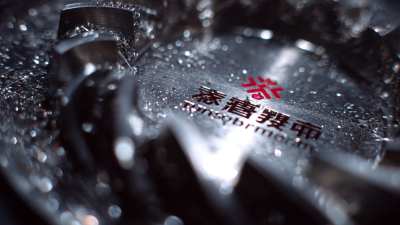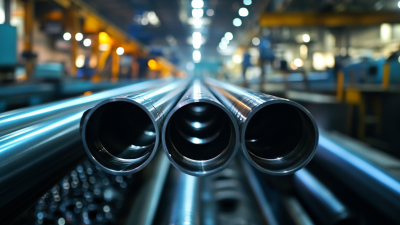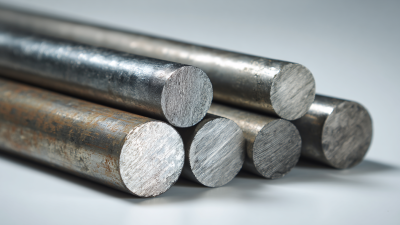Leave your message now to get your free sample and discount price
Leave your message now to get your free sample and discount price
In the ever-evolving landscape of modern manufacturing, the search for materials that offer both durability and performance remains a top priority for engineers and manufacturers alike. One material that has garnered significant attention is the Tungsten Carbide Tube. Known for its exceptional hardness and resistance to wear, Tungsten Carbide Tube has become an essential component in various applications ranging from cutting tools to industrial machinery. This article aims to uncover the myriad advantages of incorporating Tungsten Carbide Tubes into manufacturing processes, highlighting not only their mechanical properties but also their impact on efficiency and cost-effectiveness.
As industries continue to embrace advanced technologies and innovative solutions, the use of Tungsten Carbide Tubes presents unique benefits that can enhance productivity while reducing downtime. This robust material can withstand extreme conditions that would typically lead to rapid wear and tear, thus prolonging the lifespan of tools and machinery. By leveraging the capabilities of Tungsten Carbide Tubes, manufacturers can achieve significant improvements in their production processes, making them more competitive in an increasingly demanding market.
In this exploration of Tungsten Carbide Tubes, we will provide insightful tips and insights into their applications, advantages, and best practices for integration into contemporary manufacturing. Whether you are an industry veteran or a newcomer looking to optimize production, understanding the value of Tungsten Carbide Tubes is crucial for driving innovation and operational success.

Tungsten carbide tubes are rapidly gaining popularity in modern manufacturing due to their remarkable advantages over traditional materials. Unlike common metals or plastics, tungsten carbide exhibits exceptional hardness and wear resistance, significantly extending the lifespan of components. This durability minimizes the need for frequent replacements, resulting in reduced production downtime and overall cost savings. Furthermore, tungsten carbide's ability to withstand extreme temperatures and corrosive environments makes it ideal for demanding applications in industries such as aerospace, automotive, and medical device manufacturing.
In contrast to conventional materials, which may degrade over time or under stress, tungsten carbide maintains its integrity, ensuring consistent performance. Recent advancements in manufacturing processes, such as improved coating technologies, further enhance the surface properties of tungsten carbide components, addressing issues like slip and adhesion in various applications. As manufacturers seek more reliable and efficient materials to meet growing industrial demands, the benefits of tungsten carbide tubes become increasingly evident, positioning them as a superior choice in contemporary manufacturing environments.
Tungsten carbide tubes have emerged as a crucial component in modern manufacturing due to their remarkable durability and wear resistance. With a hardness rating of 9 on the Mohs scale, tungsten carbide is significantly tougher than traditional materials like steel, making it an ideal choice for high-wear applications. According to a report by the United Nations International Trade Statistics, industries that employ tungsten carbide components have witnessed a marked decrease in failure rates—up to 50% reduction—when compared to their steel counterparts. This incredible resilience allows manufacturers to maintain operational efficiency and reduce downtime caused by equipment replacements.
Moreover, the wear resistance of tungsten carbide tubes contributes to an extended lifespan, translating to lower replacement costs and minimal maintenance. A study conducted by the American Society for Testing and Materials (ASTM) noted that tungsten carbide can last up to ten times longer than non-carbide materials in abrasive environments. This characteristic is especially beneficial in sectors such as mining, oil drilling, and aerospace manufacturing, where machinery is subjected to extreme conditions. As industries continue to prioritize cost-effectiveness and production efficiency, the integration of tungsten carbide tubes is proving to be a strategic advantage in modern manufacturing processes.
Tungsten carbide tubes have emerged as a cost-effective solution in modern manufacturing processes, especially when considering their long-term usage. The durability and robustness of tungsten carbide significantly reduce the frequency of replacements compared to other materials. This exceptional wear resistance translates into lower maintenance costs and fewer production downtimes, enabling manufacturers to maintain higher operational efficiency.
Moreover, while the initial investment in tungsten carbide tubes may be higher than alternatives, the long-term savings can be substantial. The reduced wear and tear mean that manufacturers can benefit from consistent performance over extended periods. This not only leads to a decrease in material costs but also improves overall productivity and profitability. By opting for tungsten carbide, companies can ensure they are making a sustainable choice that pays off over time, positioning themselves for greater competitiveness in the industry.
Tungsten carbide tubes have emerged as a vital component in various industrial applications due to their exceptional properties. Known for their high hardness and resistance to wear, these tubes have become indispensable in sectors like aerospace, oil and gas, and manufacturing. According to a report by Research and Markets, the global market for tungsten carbide is expected to reach $16.62 billion by 2027, highlighting the increasing demand for materials that can withstand extreme conditions.
In the manufacturing realm, tungsten carbide tubes are utilized for tools and machinery that require precision and durability. For instance, in the oil and gas industry, these tubes are often used in the production of drill bits that operate in high-pressure environments. A study by the American Society of Mechanical Engineers indicates that the incorporation of tungsten carbide can enhance the lifespan of these tools by up to 50%, significantly reducing downtime and maintenance costs. With their versatility, tungsten carbide tubes are also employed in the production of various components in the automotive and medical industries, proving essential in applications where strength and reliability are paramount.
In the realm of modern manufacturing, tungsten carbide tubes are increasingly recognized for their exceptional durability and versatility. These innovative materials are integral to various manufacturing techniques, providing significant advantages in efficiency and productivity. For instance, tungsten carbide’s remarkable resistance to wear and corrosion makes it an ideal choice for applications that require high precision and longevity, such as in cutting tools and structural components.
Tips: When selecting tungsten carbide tubes for your manufacturing needs, consider the specific properties required for your application. Assessing the tube's hardness, density, and thermal stability can lead to optimal performance and reliability. Additionally, investing in quality sourcing will ensure that the tungsten carbide meets industry standards, ultimately saving costs on replacements and downtime.
Innovative manufacturing techniques, such as additive manufacturing and precision machining, leverage the unique properties of tungsten carbide tubes. These processes allow for complex designs that can withstand extreme operating conditions. Moreover, the integration of advanced technologies, like 3D printing, with tungsten carbide opens new avenues for customization and rapid prototyping, streamlining the path from concept to production. Adopting these methods can significantly enhance your manufacturing capabilities, making your operations more agile and competitive in today’s fast-paced market.






